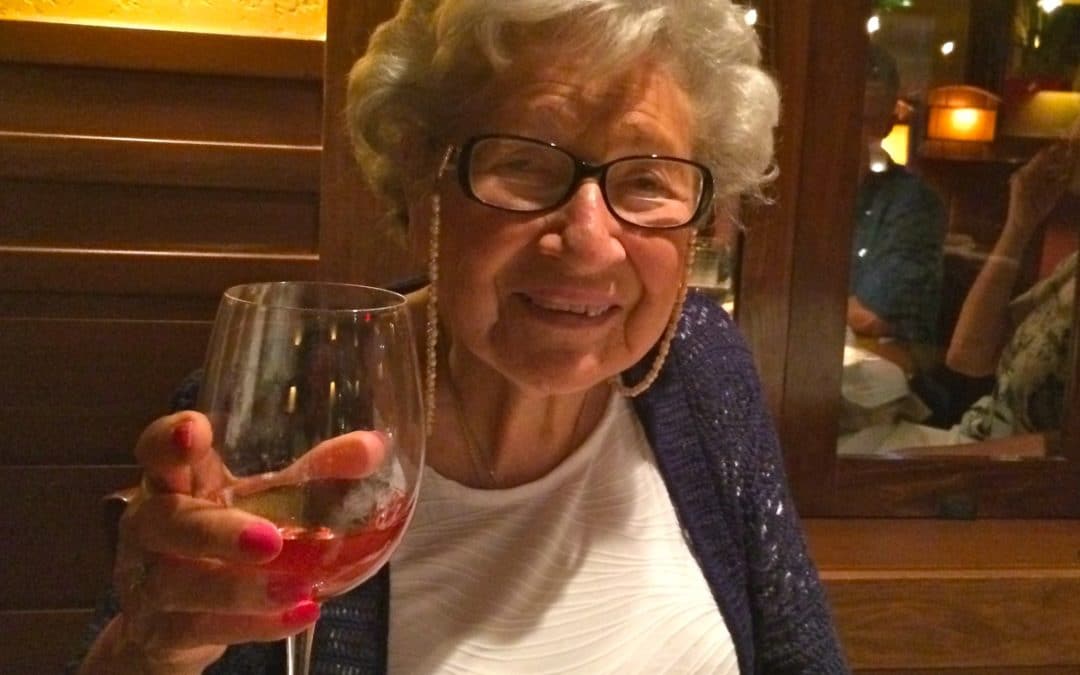
Award-winning writer and editor Ronni Sandroff is now accepting editorial assignments in the arts & sciences. Based in sunny coastal Florida, Ronni can still get things done in a New York minute! Sign up for the mailing list for a free exclusive copy of her e-essay, “How to edit yourself…without stepping on your muse.”

By Ronni Sandroff | Oct. 2017 | Health Central
When I inquired about plans for hurricane season, the director at my mother’s Florida assisted living center was unconcerned. “Don’t worry about it,” he said. “We’ve been through several big ones and never had any damage or lost power.” In hindsight, I should have countered with “past performance is no guarantee of future results” and asked a lot more questions.
Given recent horrific incidents, including the death of eight residents after Hurricane Irma knocked out power to a Florida nursing home in September 2017, a top concern for anyone choosing or re-evaluating a facility should be emergency preparedness. A blithe “don’t worry about it” may be a warning sign that the director is not comfortable sharing key details.
Ask about generator capacity
While most facilities have some emergency preparedness, “ask whether their plan was developed in coordination with, and/or approved by, someone with expertise in this area,” advises Lori Smetanka, executive director of the National Consumer Voice for Quality Long-Term Care.
Probe whether the facility has a stockpile of supplies and medications on hand and adequate generator capacity to run all systems, including air conditioning, heat, medical machines, and elevators if there’s a loss of power. Other key issues, Smetanka says, include:
- How staff members prepare for and respond to emergencies.
- How often the facility participates in disaster planning drills, not just internally, but as part of a community effort.
- How the facility makes, sure enough, staff members are present to respond to an emergency situation.
Pose these questions
Disaster response plans are only as good as the people implementing them. In some nursing home incidents “there seems to be a failure to sound the alarm,” says Peggy Flannigan, associate professor of nursing at Bradley University in Washington, D.C. “I have to wonder if the administrator was in over his or her head and just didn’t know where to turn.”
So perhaps the most important thing to do is consider the competence and caring of the facility’s leadership. Can they clearly answer such questions as:
- What if the staff is unable to make it into work?
- Will extra staff be staying in the facility if there’s a flood or hurricane warning?
- Who will be in charge?
- Who will be in touch with residents’ families to let them know what’s going on?
Do your homework
Ronni Sandroff, an award-winning writer and former health editorial director at Consumer Reports, covers mind, behavior, and culture from Southern Florida.

If your plans for Saturday include a walk in the park and vacuuming your house, which will you do first? Many factors, like the weather forecast, or the time your in-laws are arriving, could go into that choice. But it might surprise you to learn that such an everyday decision strongly and predictably depends on what kind of a mood you’re in at the moment.
In an extensive study led by Harvard Medical School researcher Maxime Taquet, Ph.D., more than 28,000 people were contacted via a smartphone app at random times throughout the day for an average of 27 days.
They were asked about their mood and the activity they were doing. The results, published in the Proceedings of the National Academy of Sciences in August 2016, revealed that a person’s current mood would accurately predict what he or she will be doing and feeling in the next few hours.
While previous work in this area assumed that pleasure-seeking was the strongest motivator of people’s choices, the study’s results challenged that idea.
It found that when people feel bad, they seek mood-boosting activities, and when they feel good, they choose necessary but less pleasant tasks. Current mood can double or triple the likelihood that you later engage in certain types of activities, according to the study authors.
Cut yourself some slack
Taquet says he has learned some life lessons from his study. “When I’m rushing for a deadline and feel the urge to go out, see a friend, or do some exercise, I used to feel guilty, thinking that I was merely procrastinating or slacking off,” he says. “Now I know that this may be necessary to recharge my happiness battery so that I can carry on with my longer-term goal. This is an adaptive behavior that may prove very useful for us humans.”
When we need some cheering up, we move toward mood-enhancing activities, such as sports, chatting, going out for a walk, or for a drink. When we’re already in a good mood, we gravitate to less pleasant activities, such as working, shopping, cooking, and cleaning, perhaps thinking that our mood will tolerate them.
Coax yourself into productivity
When mood cannot influence your choice of activity (for example, you have to go to work), it can still affect both your productivity and attitude about the work. A small study published in The Academy of Management Journal in 2011 tracked how waking up on the wrong side of the bed affected the work day.
Promo block
Researchers Nancy Rothbard and Steffanie L. Wilk tracked the moods and performance of customer service representatives at an insurance company call center. They found that those who started the day in a good mood provided better quality service and tended to feel more positively about the customers they talked to, describing them as calm, cheerful, and friendly.
But the reps who started out in a bad mood more often described their customers as rude, frustrating, or insulting.
It may not be possible to check your mood at the door when you start your day, but there are steps you can take to shrug off the lingering effects of a frantic morning with your family or a frustrating commute. Rothbard suggests testing out such techniques as listening to music, stopping for coffee, giving yourself a pep talk, and taking a deep breath and getting ready for a new situation.
Leverage your good moods
If you’re feeling psyched because you just exercised, enjoyed an affectionate phone call, or woke up on the right side of the bed, you can view your good mood as a lever toward longer-term goals. This may be just the time to tackle tasks you’ve been avoiding, and, yes, that might depress your mood a bit, but they’ll get done‑and what a relief to have them off your to-do list.
“The idea that we sacrifice our instant pleasures certainly sounds counterintuitive,” Taquet says. “But unpleasant yet necessary tasks need to be done at some point, and this is important for our longer-term welfare. What our data and analyses showed was that people, in general, tend to do those things when they feel good.”
So if you’re in a good mood, you’re likely to tackle vacuuming the house before you go to the park. And if you’re in a snit, you’re more likely to go to the park first, in the perhaps unconscious hope of elevating your mood enough to tolerate the vacuuming.

If you’ve recently left the workplace or moved out of state, you may be feeling a little isolated. But don’t despair. New opportunities can still abound, and cultivating new friends can be good for your mental health, too.
When Stanford University invited retired people to come to campus to take classes for a year, the 30 people in that group bonded tightly, says Laura Carstensen, a professor of psychology and founding director of the Stanford Center on Longevity.
“What surprised them was the very important friendships that these folks were forming with one another,” she says. Like the younger students, the retirees were able to leave their previous lives and professional images behind when they got on campus and enjoyed the freedom of being who they were now.
“Social networks get smaller as people age but, surprisingly, older people are more satisfied with them and often report levels of emotional well-being that are higher than those of younger adults,” Carstensen adds.
It may take extra effort to make those new social bonds, as I discovered after leaving the companionship of the workplace and moving away from my home in the Northeast. Here are several steps that can make the process of forging new friendships a bit easier.
1. Explore the landscape
Some organizations, such as Newcomer’s Clubs and MeetUp, focus on providing get-acquainted opportunities for their members with similar interests.
“Even if you haven’t moved, when you retire or semi-retire, you can act like a newcomer in your own city, and do and join the things you missed out on before,” advises life coach Barbara Beizer of Washington, D.C.
Beizer eventually became a board member of The Transition Network, a national group that focuses on “what’s next?” issues for professional women over 50. Joining my local chapter (and volunteering for two committees) helped me get over my “friendless in Florida” phase.
Volunteer, community, and religious groups, as well as lifelong learning classes, are other places to find people with interests like yours who may also be looking for new friends.
2. Pave your way
Don’t be surprised if you enthusiastically put events on your calendar only to find that when the time comes, you’ve got a tiny stomach ache and a large reluctance to leave the house.
Many of us get a bit anxious—I call it “stage fright”—when we enter new situations. It may help to pave your way beforehand by calling or emailing the organization’s officers, introducing yourself to someone, and saying you plan to attend their next function.
If possible, arrange to drive to the event with someone. Hopefully, you’ll have at least one person to look for when you get there, and that will lead to other introductions.
3. Make the first (and second) move
If you feel a spark when chatting with a new person, or just want to continue the conversation, don’t be shy about asking for an email or phone number. I always try to follow up immediately, so we don’t forget each other and propose meeting for coffee. If you enjoy each other, the next time, each of you can invite another acquaintance or two and broaden the circle.
“Just say yes,” to invitations from new individuals or groups. The more I said yes, the more I was invited (no one likes rejection), and the more often people said yes to me when I proposed my favorite activities.
4. Be alert for social connectors
It’s a good idea to mention to people that you’re looking for more social connections. Just as some people fancy themselves to be matchmakers, others have a special talent for connecting people and the generosity of heart to share friends. I was fortunate to meet such a person, and she introduced me to a number of interesting people.
5. Become a regular
Whether it’s at a committee meeting or a dog park, meeting regularly can deepen a connection. “Seeing each other often develops a kind of affection and shared experience,” Beizer says. “It’s the fastest way to get to know people.”
If you see people regularly at an activity you all enjoy, you’re much more likely to find friendship and the health boost that can come with it.

By Ronni Sandroff | October 2017| Health Central
The shift in the relationship that occurs when a parent becomes disabled is an uneasy one for parent and child alike. The crucial issue is often one of control, says Kurt Kazanowski, R.N., owner of Homewatch Caregivers, a Plymouth, Mich., company that provides families with home health aides.
“It’s quite normal for people who were always in charge in their own lives to feel resentful and frustrated as their ability to control things slips away,” he says.
Here are three ways to handle the touchy issue of providing care while leaving some important choices to your loved one.
1. Have a heart-to-heart
It helps if the family has put at least a general plan in place for what to do if a parent becomes disabled. The time for that conversation is no later than their early 70s, Kazanowski advises when parents can clearly express a preference on such issues as power of attorney and where they would prefer to live if they became unable to care for themselves.
Whenever the conversation takes place, start by listening deeply. Sometimes a person with a history of rejecting advice is simply trying to exert some control. Allow the person to talk and complain, so he or she feels supported and understood.
Then try to talk with your parent about how his or her actions and decisions make you feel. As your dynamic changes to caregiver, it can be a good time for healing past wounds, Kazanowski says.
2. Use positive reinforcement
Give your full attention and support when your parent is being reasonable, and share memories and opinions. Allow him or her to make decisions when feasible, such as choosing a restaurant or an outfit. Offer to help your parent find projects to work on, such as painting or knitting, where he or she can exercise creative control.
If your parent seems unusually irritable or out of character, talk to the doctor about whether pain and/or medication reactions are responsible. Perhaps medicines can be changed or dosages reduced. And simple exercises and occupational therapy techniques can help reduce pain symptoms.
3. Pave the way regarding driving
When it’s time to have “the talk” about transportation, try an oblique approach. Instead of suggesting that your parent hand over the car keys, begin by discussing the alternatives, such as today’s availability of van services for the elderly and private cabs through Uber and Lyft for getting to doctor and other appointments.
Then ask your parent how he or she now feels about driving. Sometimes your parent will let you know that he or she is having problems.
Tell your parent what you have observed. It’s best if the older person voluntarily decides not to drive, but it may be necessary to apply tough love to keep your parent and others safe. The Family Caregiver Alliance offers some useful tips on how to handle this situation.
If your parent becomes angry or upset, try to respond with kindness and offer to discuss it. If that doesn’t work, leave the conversation and say you’ll resume it at a better time to avoid responding in anger or getting upset yourself.
Don’t delay hospice
Unfortunately, many people whose parents have chronic conditions like COPD don’t realize they are eligible for hospice care. “Many people tell me, ‘I should have signed up my parent for hospice sooner,’ “ says Kazanowski, who also advises hospice organizations.
Along with medical and nursing management, hospice care offers home health aides, touch therapy, music therapy, spiritual components, and dementia programs. The staff can also help relatives and caregivers relate to the older person and deal with the grieving process.
Ronni Sandroff, an award-winning writer and former health editorial director at Consumer Reports, covers mind, behavior, and culture from Southern Florida.





